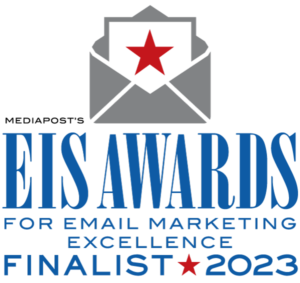Why You Should Make Content Marketing Part of Your Strategy
Learn what content marketing is, how you can use it, and why email is an important part of any content marketing strategy.
Learn what content marketing is, how you can use it, and why email is an important part of any content marketing strategy.

Months of audience management and offer optimization fuel soaring holiday sales for this beauty brand. Read this case study to see how we partnered with

We are so pleased and honored to hear that MediaPost EIS has announced that our teams at Dr. Scholl’s and Alchemy Worx are finalists for
Learn what content marketing is, how you can use it, and why email is an important part of any content marketing strategy.

Months of audience management and offer optimization fuel soaring holiday sales for this beauty brand. Read this case study to see how we partnered with

We are so pleased and honored to hear that MediaPost EIS has announced that our teams at Dr. Scholl’s and Alchemy Worx are finalists for

Untested subject lines are a crapshoot. Like many things in life, subject-line performance falls on a bell curve. Some perform exceptionally well. Most are average
Our findings last month on the Obama campaign caused a lot of debate but the bare facts of our analysis still stand had Obama’s team optimized for improved open rates, their send volumes would have dropped and their all-important donations would have followed.
We doubled the frequency of Email-Worx in July, and as expected, open and click rates have fallen, however despite this, we’re still meeting our campaign’s objectives.
An email address is at the heart of people’s ID and makes possible a massive range of our daily interactions – with each other, with brands and shops, with government and employers.
Popular opinion states that an unopened email means your subscriber is disengaged and uninterested in making a purchase – we disagree. Unopened email communications have a tangible impact on brand awareness and can lead to purchase activity across all channels.
We’re seeing more and more special characters dropping into our inboxes lately – cute symbols like 

The colon (Test Worx: How many clicks is an image worth?) generated a higher level of opens, but a lower level of clicks.
In issues of Email-Worx, we’ve used a variety of words and symbols – colons, dashes, plus signs etc – to divide the propositions within our subject lines. In analysing the performance of these different separators, we’ve discovered that there’s more to punctuation than meets the eye…
Subject lines are one of the first things your subscribers see when they go into their inbox and have a proven and measurable impact on whether they go on to open, click and convert. Which is why so many email marketers spend so much time AB testing their SLs.
As you can see from the chart below, subject line B “Incentivise your email program without devaluing your brand” went into the lead almost immediately, and after 15 days had generated 32% more unique opens and 20% more unique clicks than subject line A “Incentive Programs: Your guide to giving”.
“What words should I avoid in my email subject line to ensure I get to the inbox?” This is possibly one of the most frequently answered (if not asked) questions in email marketing. To prove the point we decided to do a quick search “how to avoid spam” + “subject lines”
The results are in! Chasing opens would have lost Obama the election There is little doubt in my mind that email was the No. 1 non-political contributor to Obama’s win in the 2012 US Presidential race. 75% of the $934 million raised by Obama was attributed to digital and nearly all of that $700 million was raised through email1. That fact alone is phenomenal.
They say a picture is worth a thousand words. But which picture? Here at Alchemy Worx we wanted to test the performance of images that contribute to a recipient’s understanding of the content of an email. Specifically, we wanted to know what works best when sourcing imagery to accompany editorial content – the pretty or the pretty informative?